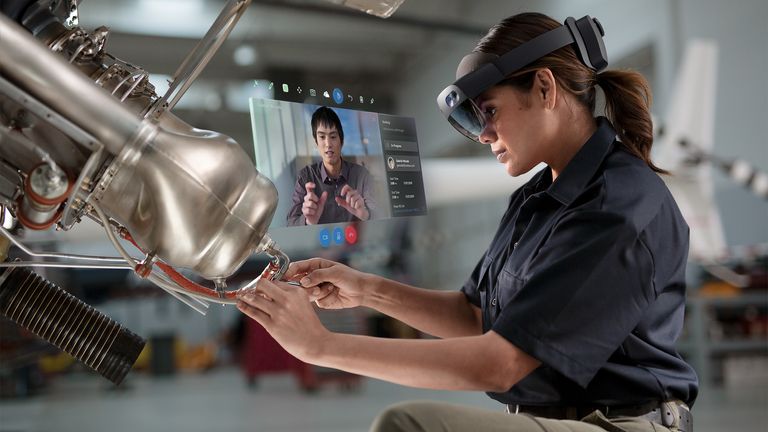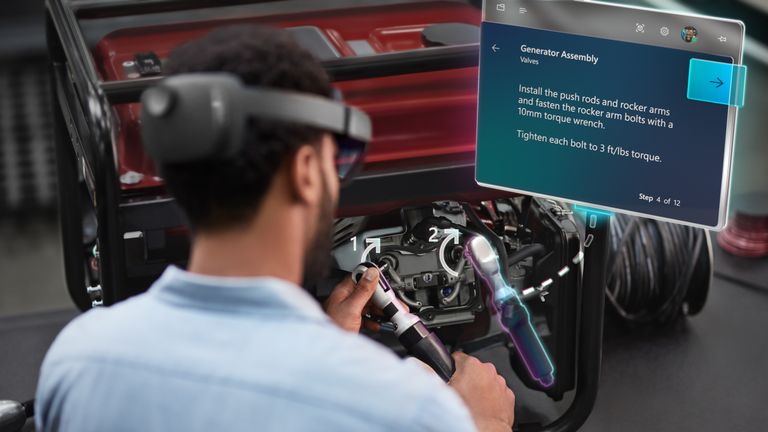HoloLens 2: Microsoft unveils new augmented reality headset
Hands-free interactions with holographic projections may set Microsoft's new device apart from competitors' projects.
Tuesday 26 February 2019 13:55, UK
Microsoft has unveiled the next generation of its augmented reality (AR) headset HoloLens.
The device can now track the movement of its wearers' hands to let them interact with the visuals it superimposes on the world.
Rather than gaming headsets, such as the virtual reality Oculus Rift, the AR HoloLens doesn't completely obscure its users' view of the world around them.
Instead it projects additional visual information on that world, in what Microsoft hopes will have applications in a number of workplace environments.
By presenting holograms alongside the real-world environment, users could receive assistance in a range of situations - from surgery to rebuilding a motorbike.
In 2015, Microsoft stated that HoloLens was already being used to help medical students study anatomy, enabling them to see holographic layers of the human body.
Now, the new HoloLens' ability to track users' hands and allow them to interact with the graphics will "eliminate the learning curve", according to Microsoft.
It will mean that they can operate the headset completely hands-free.
This form of interaction will be combined with smart microphones and natural language speech processing to let users control the computer system that backs up the headset.
Also unlike the Oculus Rift, the HoloLens isn't tethered to a computer tower, but sits comfortably on users' heads.
Although the hands-free nature of the HoloLens is potentially a leap forward for AR headsets, it's unlikely to receive much pick-up as a consumer device any time soon.
Priced at around $3,000 (£2,700) it is considerably more expensive than many modern smartphones which also offer an AR capability.
The device is available for pre-order, but Microsoft has yet to announce a release date.






